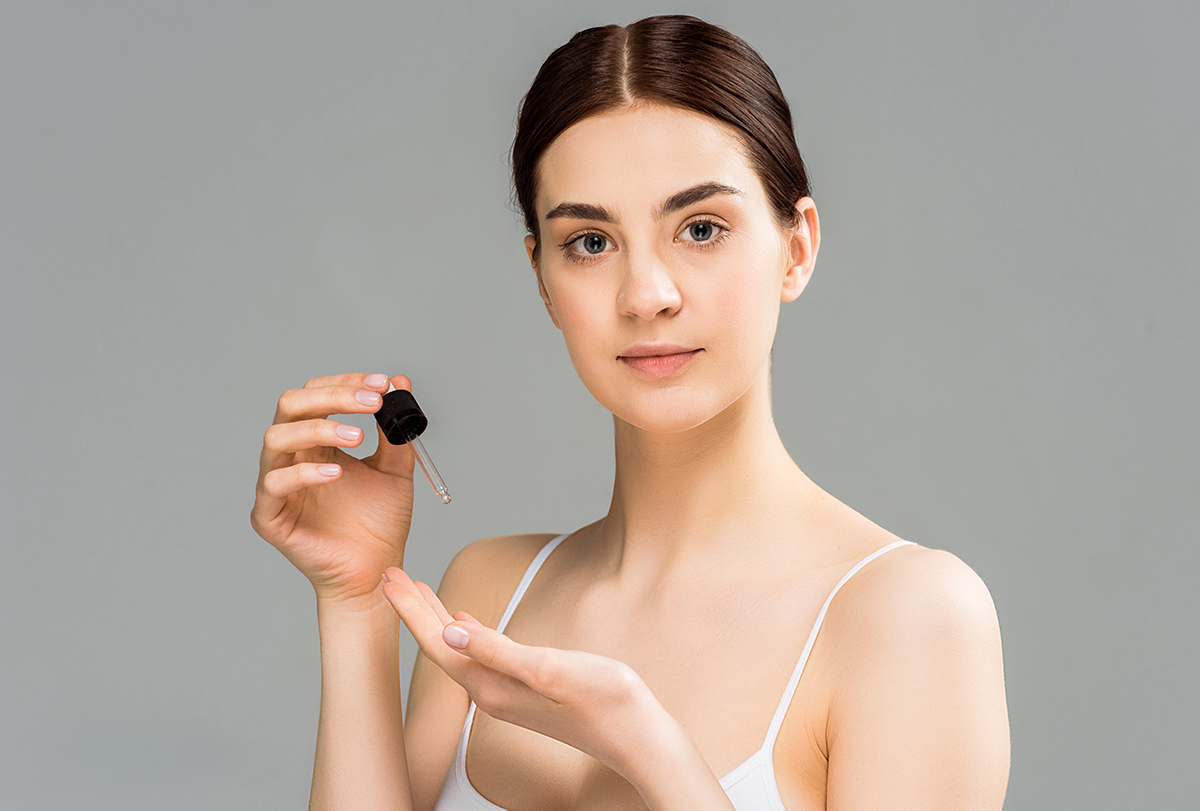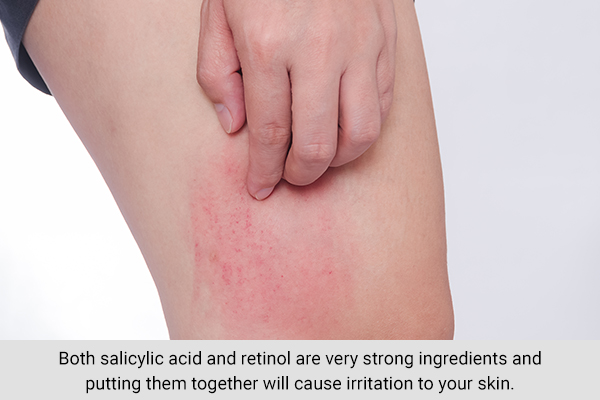In this article:
If you’re one of the people who love skin care, enjoy trying out new skin care products, or simply aim to build a healthy skin care practice, you will every now and then ponder upon questions such as which ingredients are the best for your skin and if they can be used together for added benefits.

It’s normal to get overwhelmed by the various options of powerful skin care products with ingredients such as glycolic acid, salicylic acid, hyaluronic acid, and retinol. The most common confusion faced by many is whether acids can be mixed with other ingredients and, if yes, how to do it.
When it comes to strong components such as salicylic acid and retinol, understanding when and how you can utilize the two together is essential to developing a skin care regimen that addresses your skin problems.
These two are very famous ingredients and are popular for their skin health-promoting activities. But if used together incorrectly, they can cause irritation.
Although salicylic acid and retinol can be employed together in the same skin care regimen, you must learn how to apply them properly and with caution.
What Are the Side Effects of Using Salicylic Acid With Retinol
You should not use together or mix retinol or salicylic acid.
Retinol products are not traditionally that stable; they are prone to breaking when exposed to sunlight. Pure retinol is exceedingly unstable and difficult to develop for cosmetic and pharmaceutical uses. Consequently, diverse strategies are used for stabilizing retinoids. (1)
Not only this, but retinol is also known to be not compatible with salicylic acid. Here are the reasons it is not advised to mix retinol and salicylic acid.
1. Irritates the skin

Both salicylic acid and retinol are very strong ingredients and putting them together will cause irritation to your skin. They are known to cause skin dryness, so if you are not used to using them, they may not be so good for your skin.
Retinoids may cause side effects that may worsen when another power ingredient such as salicylic acid is also applied to sensitive skin. These effects include: (1)
- Pruritus
- Burning sensation
- Erythema
- Peeling
- Conjunctivitis around the eyes
2. Low absorption rate
To work properly, salicylic acid is developed at a low pH, generally ranging between 3.0 and 4.0. Studies have established that the higher the pH, the nominally it is absorbed into the skin. (2)
Retinol, on the other hand, has a higher optimal pH and is most stable at 6.5. (1)(3)
When you combine these two ingredients, retinol may increase the pH of the salicylic acid, making the overall pH less acidic and making your skin slightly unable to absorb it as well as it did before, (2) thereby diminishing the results.
3. Limited retinol conversion

Retinol is derived from vitamin A, and your body converts it back into the vitamin so that your skin can use and benefit from it. This conversion happens at a more neutral pH.
Since salicylic acid has a lower pH, if retinol is used with salicylic acid, the conversion may be decreased. This leads to lower overall effects of retinol on the skin. (4)(5)
How to Use Salicylic Acid With Retinol Correctly
If you do wish to use salicylic acid and retinol together, there are proper ways to apply both of them. Here’s how you can do it.
1. Alternate the two

If you want to use both retinol and salicylic acid during the night and not in the morning, then this may be the best option for you going forward. They are both very active ingredients, so use them on alternate nights. If tonight you use retinol, tomorrow night shift to salicylic acid.
There is no hard and fast rule as to how many nights you should use them or if alternating them one after another is the best. You can increase the usage of one over the other depending on your long-term skin care goals.
You can also apply retinol on two consecutive nights and salicylic acid on the third one or vice versa. You can even keep a night off in between and not apply either of the products. You can try these different plans out and see what works best for you.
Just remember to start with a low dose of both ingredients and slowly increase the dose as your skin gets accustomed to these active ingredients. (6)
2. Using both on the same night
If you still wish to use salicylic acid and retinol on the same night, wait for a sufficient amount of time between applications of both.
Once you have applied a layer of salicylic acid, give it at least half an hour or so before you apply retinol. It is always better to first apply a layer of salicylic acid and then retinol. The waiting period is important for the skin to get to the neutral normal pH after acid application for retinol conversion. (6)
Most-Asked Questions About Salicylic Acid and Retinol for Skin
What is the most commonly available concentration of salicylic acid?
Salicylic acid is most commonly available in the concentration of 2%, although it can go as high as 5% in OTC products. (7)
What is better for acne, retinol or salicylic acid?
Retinol is very helpful in reducing the signs of photoaging (8) and resolves marks, acne scars, or other effects of breakouts. Salicylic acid is also famously known for its activity against acne.
You may think using them together is a great way to fight acne but it is not. (9) You can use either of them for acne, but not both, depending upon what works best for you.
What does retinol do for the skin?

- Retinol is helpful in decreasing signs of aging such as wrinkles and fine lines. These can also occur from sunlight exposure, and retinol is helpful in that regard too. (10)(11)
- Retinol is good for smoothening the skin and improving its texture. (12)
- Retinol can decrease pigmentation on the skin and brighten it as well. It is good for resolving hyperpigmentation. (13)(14)
- Retinol processes and aids hyaluronic acid production and is thus good for skin health. (15)(16)
How does salicylic acid work?
Salicylic acid removes dead skin cells and is also good as an antibacterial that can curb breakouts or acne. Also, it clears follicle blockage that is caused by excessive dirt or oil on the skin. Moreover, it has anti-inflammatory effects and reduces swelling, redness, and dryness.
What does salicylic acid do for the skin?
- Salicylic acid exfoliates the skin and removes dead skin cells by getting rid of the cementing material between cells, loosening them, and removing them. (17)
- It improves skin texture and makes your skin smooth. It also constricts the pores. (18)(19)
- It is helpful in removing excess oil and inhibiting extra sebum production. (20)
Final Word
Don’t use retinol with salicylic acid because their combined effect can be incredibly harsh on the skin. If you do want to use both ingredients, follow the tips given above to avoid undue effects and achieve your skin goals.
- Was this article helpful?
- YES, THANKS!NOT REALLY


